Allan P Jarvis
age ~77
from Merrimac, MA
- Also known as:
-
- Allan T Jarvis
- Allen P Jarvis
- Allan P Arvis
Allan Jarvis Phones & Addresses
- Merrimac, MA
- Salisbury, MA
- East Stroudsburg, PA
- Pocono Pines, PA
- Bailey Island, ME
- Exton, PA
- Berwyn, PA
- Newburyport, MA
- Monroeton, PA
Name / Title
Company / Classification
Phones & Addresses
Principal
JARVIS BIOPHARMA BUSINESS DEVELOPMENT ADVISOR, LLC
Nonclassifiable Establishments
Nonclassifiable Establishments
46 Riv Rd, Merrimac, MA 01860
Principal
Salisbury Great Meadows, LLC
Nonclassifiable Establishments
Nonclassifiable Establishments
24 Market St, Amesbury, MA 01913
Resumes

Allan Jarvis
view sourceWork:
Better Credit Sloution Jan 2001 - May 2011
Credit Repair Specialist and Mortgage Consultant
Credit Repair Specialist and Mortgage Consultant

President
view sourceLocation:
West Newbury, MA
Industry:
Biotechnology
Work:
Sanofi Pasteur Feb 2011 - Mar 2013
Corporate Development Advisor
Jbbda Feb 2011 - Mar 2013
President
Sanofi Pasteur 2003 - 2011
Senior Vice President, Corporate Development
Pfizer 1995 - 2003
Vice President, Business Development
Repligen Corporation Jan 1, 1992 - Dec 31, 1995
Vice President, Business Planning
Corporate Development Advisor
Jbbda Feb 2011 - Mar 2013
President
Sanofi Pasteur 2003 - 2011
Senior Vice President, Corporate Development
Pfizer 1995 - 2003
Vice President, Business Development
Repligen Corporation Jan 1, 1992 - Dec 31, 1995
Vice President, Business Planning
Education:
University of California, Davis 1974 - 1976
Doctorates, Doctor of Philosophy, Genetics, Molecular Biology Northeastern University 1972 - 1974
Master of Science, Masters, Molecular Biology Bowdoin College 1966 - 1970
Bachelors, Bachelor of Arts, Biology, Music, Chemistry, Composition, Studio Art Pentucket Regional High School
Bowdoin College
Doctorates, Doctor of Philosophy, Genetics, Molecular Biology Northeastern University 1972 - 1974
Master of Science, Masters, Molecular Biology Bowdoin College 1966 - 1970
Bachelors, Bachelor of Arts, Biology, Music, Chemistry, Composition, Studio Art Pentucket Regional High School
Bowdoin College
Skills:
Biopharmaceuticals
Biotechnology
Technology Transfer
Vaccines
Pharmaceutical Industry
Clinical Development
Drug Development
Lifesciences
Drug Discovery
Infectious Diseases
Immunology
Biologics
Fda
Cro
Business Development
Monoclonal Antibodies
Strategic Planning
Virology
Regulatory Affairs
Clinical Trials
Antibodies
R&D
Oncology
Gmp
Pharmaceutics
Assay Development
In Vitro
Microbiology
Medical Devices
Protein Chemistry
Molecular Biology
Glp
Regulatory Submissions
Ind
Gcp
Pharmacology
Biochemistry
Cancer
Translational Medicine
Strategic Alliances
Biomarkers
Purification
Genomics
Drug Delivery
Cell
Immunoassays
Licensing Negotiations
Business Transactions
Alliance Management
International Business
Biotechnology
Technology Transfer
Vaccines
Pharmaceutical Industry
Clinical Development
Drug Development
Lifesciences
Drug Discovery
Infectious Diseases
Immunology
Biologics
Fda
Cro
Business Development
Monoclonal Antibodies
Strategic Planning
Virology
Regulatory Affairs
Clinical Trials
Antibodies
R&D
Oncology
Gmp
Pharmaceutics
Assay Development
In Vitro
Microbiology
Medical Devices
Protein Chemistry
Molecular Biology
Glp
Regulatory Submissions
Ind
Gcp
Pharmacology
Biochemistry
Cancer
Translational Medicine
Strategic Alliances
Biomarkers
Purification
Genomics
Drug Delivery
Cell
Immunoassays
Licensing Negotiations
Business Transactions
Alliance Management
International Business

Allan Jarvis
view source
Allan Jarvis
view sourceLocation:
United States
Us Patents
-
Method Of Culturing Anchorage Dependent Cells
view source -
US Patent:44952880, Jan 22, 1985
-
Filed:Apr 13, 1983
-
Appl. No.:6/484627
-
Inventors:Allan P. Jarvis - Newburyport MA
Franklin Lim - Richmond VA -
Assignee:Damon Biotech, Inc. - Needham Heights MA
-
International Classification:C12N 500
C12N 502
C12N 1100
C12N 1104 -
US Classification:435241
-
Abstract:Disclosed is a method of growing anchorage-dependent cells: cells of the type which normally undergo mitosis only when anchored on a substrate, e. g. , fibroblasts or epithelial cells. The method comprises the steps of encapsulating a seed culture of the cells within a semipermeable membrane and suspending the capsules in a growth medium. The interior surfaces of the capsule membrane and/or collagen enclosed within the capsules serve as a substrate for the cells. The ratio of the available substrate surface area to the volume of the culture may be large, thereby allowing the cells to be grown substantially throughout the volume of the culture medium.
-
Interferon Epsilon
view source -
US Patent:46146512, Sep 30, 1986
-
Filed:Jul 6, 1984
-
Appl. No.:6/628327
-
Inventors:Allan P. Jarvis - Newburyport MA
David I. Kosowsky - Newton MA -
Assignee:Damon Biotech, Inc. - Needham Heights MA
-
International Classification:A61K 4502
C12P 2100 -
US Classification:424 85
-
Abstract:Disclosed is a new material having antiviral activity designated interferon epsilon. The material may be produced, for example, by exposing primary, diploid human epithelial cells to a virus and then incubating the cells under conditions in which the new interferon is produced and is secreted into the culture medium. The material is antigenically distinct from interferon alpha, interferon beta, and interferon gamma, and displays marked antiviral activity in human epithelial cells but no detectable activity in other cell types.
-
Induction Of Immune Response By Immunization With Encapsulated Antigen-Producing Cells
view source -
US Patent:46801740, Jul 14, 1987
-
Filed:May 24, 1984
-
Appl. No.:6/613803
-
Inventors:Allan P. Jarvis - Newburyport MA
George A. Koch - Medfield MA
Paul G. Abrams - Washington DC -
Assignee:Damon Biotech, Inc. - Needham Heights MA
-
International Classification:A61K 39395
C12N 1500
C12P 2100 -
US Classification:424 85
-
Abstract:Cells such as genetically modified cells, e. g. , hybridoma, which secrete an antigenic substance are encapsulated within capsule membranes having pores of dimensions sufficient to permit efflux of the antigens secreted by the cells but insufficient to permit traverse of the cells. The capsules are injected into an experimental animal where antigen passing through the pores of the capsule membrane induces lymphocytes to produce antibodies complementary to the antigen. The antibody may be harvested from the circulatory system of the animal. Preferably, lymphocytes are sampled from, e. g. , the spleen of the animal, fused with a malignant cell line to produce a hybridoma which synthesizes the antibody in vivo, and the hybridoma is cultured to produce large quantities of monoclonal antibody.
-
Microencapsulation With Polymers
view source -
US Patent:48031682, Feb 7, 1989
-
Filed:Jun 4, 1986
-
Appl. No.:6/873283
-
Inventors:Allan P. Jarvis - Newburyport MA
-
Assignee:Damon Biotech, Inc. - Needham Heights MA
-
International Classification:C12N 500
-
US Classification:43524022
-
Abstract:Disclosed is a process for damage-free encapsulation of a variety of core materials including viable cells. The core material is suspended in an aqueous solution of a polymeric material containing cationic groups such as an aminated glucopolysaccharide, e. g. chitosan. A temporary matrix is formed by gelling droplets of the suspension with a divalent or multivalent anion. The temporary matrix is permanently cross-linked with a polymeric material containing plural anionic groups, e. g. , polyaspartic or polyglutamic acid, to form a semipermeable membrane. The interior of the microcapsule may be resolublized by subjecting the capsule to a solution of low molecular weight cations. The process produces microcapsules which are not sticky, do not clump and allow viable cell growth and proliferation.
-
Process For Recovering Nonsecreted Substances Produced By Cells
view source -
US Patent:45827990, Apr 15, 1986
-
Filed:Apr 15, 1983
-
Appl. No.:6/485472
-
Inventors:Allan P. Jarvis - Newburyport MA
-
Assignee:Damon Biotech, Inc. - Needham Heights MA
-
International Classification:C12P 2100
C12N 1110
C12N 502
A01N 6300 -
US Classification:435 68
-
Abstract:Disclosed is a process for recovering nonsecreted substances produced by cells. The process eliminates some of the high molecular weight contaminants thereby simplifying the purification process. The cells are encapsulated within a semipermeable membrane having properties which permit rapid passage of the relatively low molecular weight substances of interest but retard or prevent passage of higher molecular weight contaminants. The encapsulated cells are suspended in a culture medium and undergo normal cell growth and mitosis. The encapsulated cell culture grows to substantially fill the capsules but not rupture them. The cell membrane is then lysed without disrupting the capsule membrane. The permeability of the capsule membrane is such that the substances of interest diffuse rapidly through the capsule membrane into the extracapsular fluid while the higher molecular weight contaminants and cell fragments are retained within the capsule. The process is particularly useful for obtaining low to moderate molecular weight substances produced by pyrogen-producing prokaryotic, genetically modified organisms because the crude product can be collected relatively free of high molecular weight pyrogenic contaminants.
Vehicle Records
-
Allan P Jarvis Jr
view source -
Address:PO Box 747, Pocono Pines, PA 18350
-
Phone:5706433324
-
VIN:WP0AB29867U781306
-
Make:PORSCHE
-
Model:CAYMAN
-
Year:2007
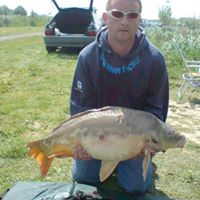
Alan Jarvis
view source
Allan Jarvis
view source
Allan Jarvis
view source
Allan Jarvis
view source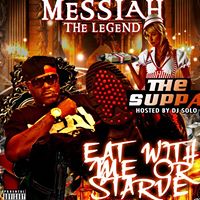
Allan Jarvis
view source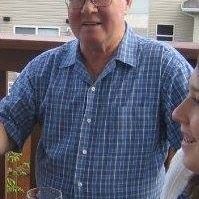
Allan Jarvis
view source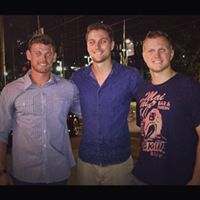
Alan Jarvis King
view source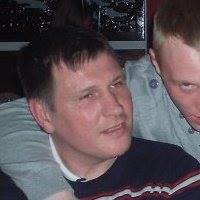
Allan Jarvis
view sourceClassmates

Allan Jarvis
view sourceSchools:
Bishop's School La Jolla CA 1953-1957
Community:
Michael Brunker, Holly Bennett, Joan Harkins, Eddra Mccarthy

Allan Jarvis | Pentucket ...
view source
Alan Jarvis, Rickards Hig...
view source
Bowdoin College, Brunswic...
view sourceGraduates:
Allan Jarvis (1966-1970),
Tara Alexander (1989-1993),
Richard Hardej (1968-1972),
Heather Allen (1993-1998)
Tara Alexander (1989-1993),
Richard Hardej (1968-1972),
Heather Allen (1993-1998)

Alix High School, Alix, A...
view sourceGraduates:
allan jarvis (1974-1978),
Clayton Ness (1955-1959),
Heba Omar (1995-1999),
Rizvi Rag (2007-2011),
Elizabeth Woodward (1950-1954)
Clayton Ness (1955-1959),
Heba Omar (1995-1999),
Rizvi Rag (2007-2011),
Elizabeth Woodward (1950-1954)

Burlington Central High S...
view sourceGraduates:
Allan Jarvis (1980-1984),
Gordon Gallenger (1974-1978),
Janet Vella (1977-1981),
M McKay (1985-1989),
Susan Rogers (1983-1987),
Gareth Hall (1987-1990)
Gordon Gallenger (1974-1978),
Janet Vella (1977-1981),
M McKay (1985-1989),
Susan Rogers (1983-1987),
Gareth Hall (1987-1990)
Myspace
Youtube
Googleplus

Allan Jarvis

Allan Jarvis
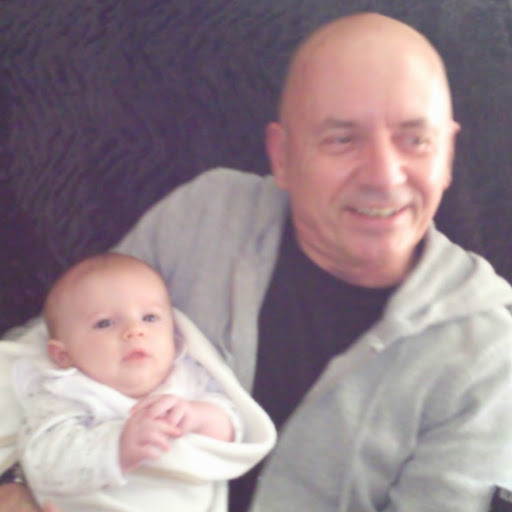
Allan Jarvis

Allan Jarvis
Flickr
Get Report for Allan P Jarvis from Merrimac, MA, age ~77
















